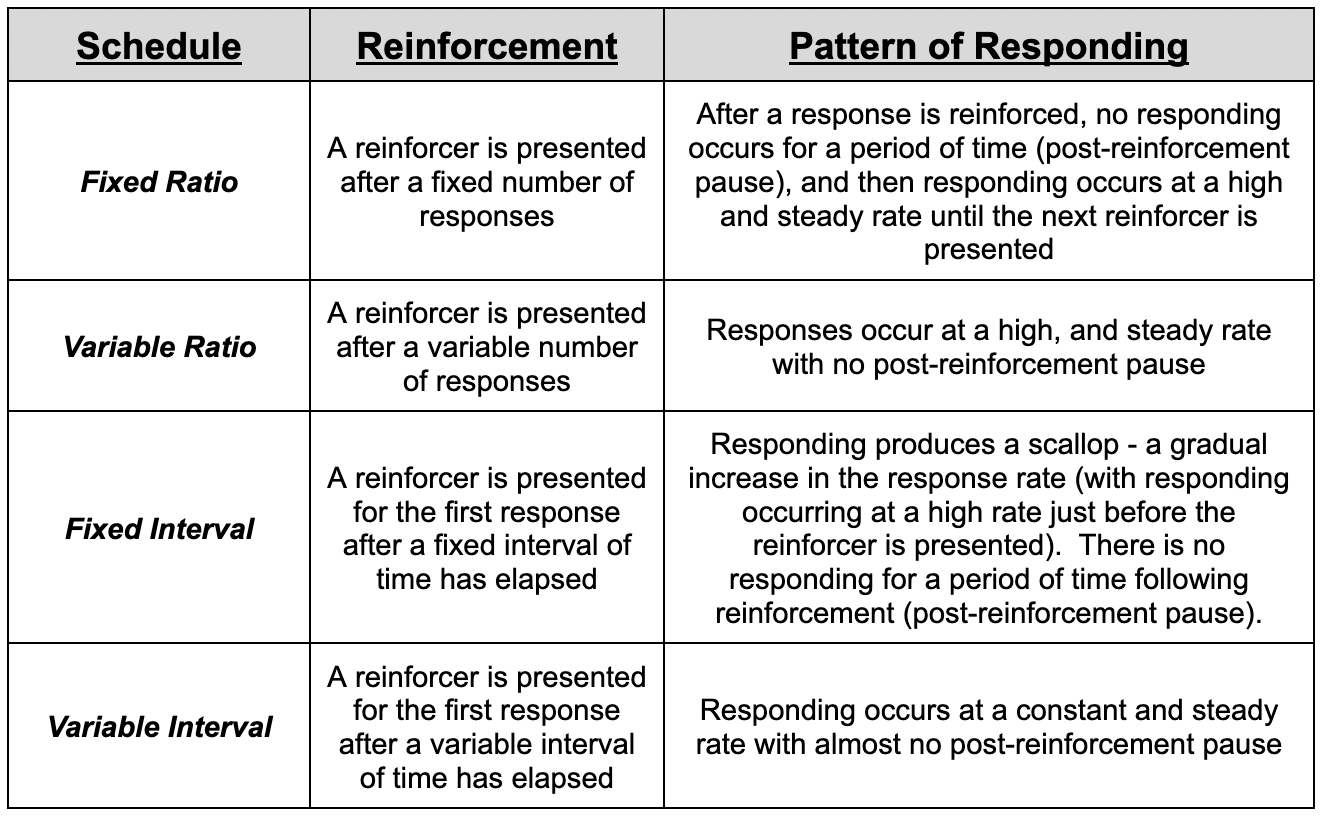B-5. Define and provide examples of schedules of reinforcement. (Sample)
In this lesson, we will review the various schedules of reinforcement. Please note that this is a sample lesson module. The full version of the Mastery Modules includes 92 of these modules, one for each task on the BCBA® 5th Edition Task List. Each module also includes a quiz. To learn more about the full version of the Mastery Modules, please click HERE.
Video Lesson
PDF Lesson
B-5 Cheat Sheet

Frequently Asked Questions
Which schedule of reinforcement produces a scallop?
A fixed interval schedule of reinforcement produces a scallop. With a fixed interval schedule, there is a gradual increase in the rate of responding, with responding occurring at a high rate just before reinforcement is available. There is no responding for some time after reinforcement (post-reinforcement pause). This post-reinforcement pause creates a scallop-like pattern on a cumulative record. Please refer to this FI-5min schedule of reinforcement (below) to see the scallop that is produced by the response rates.

Why do these various reinforcement schedules exist? Why shouldn't we just use continuous reinforcement?
Behavior analysts primarily use continuous reinforcement to teach new behaviors (or to strengthen existing behaviors). They use intermittent reinforcement to maintain the behavior.
To help the behavior maintain in the natural environment, the reinforcement schedule in the training setting needs to match the reinforcement schedule of the natural environment. The various reinforcement schedules discussed in this lesson are all used to help thin the reinforcement schedule to match the reinforcement schedule in the natural environment.
Which reinforcement schedules have a post-reinforcement pause?
Fixed interval and fixed ratio schedules have a post-reinforcement pause.
Fluency Self-Check Kit
Track your fluency for this module!
Suggested Readings
Cooper, J. O., Heron, T. E., & Heward, W. L. (2020). Applied Behavior Analysis (3rd ed.). Pearson Education Inc. (p. 301-309).
Malott, R. W., & Shane, J. T. (2014). Principles of Behavior (7th ed.). Pearson Education Inc. (p. 271-292).
